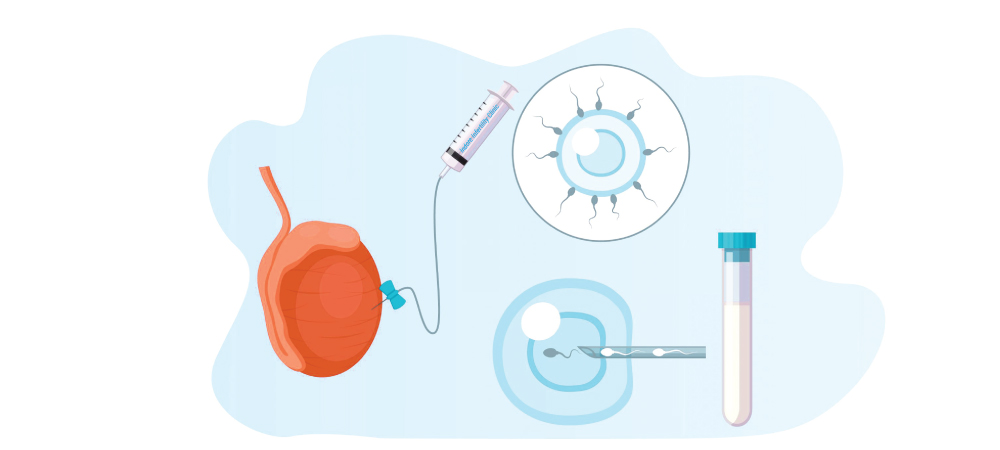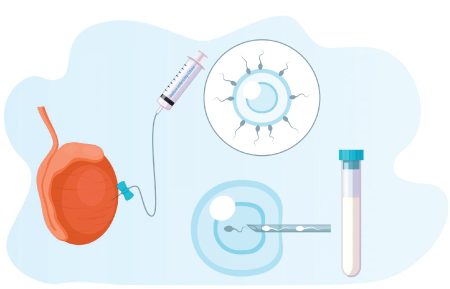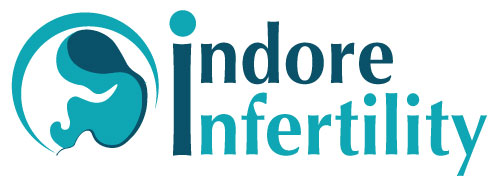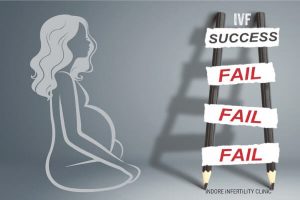

TESA / PESA – Who Needs It?
Azoospermia are of two types, one where sperms are not produced within the testes, this condition is called non obstructive azoospermia and one where sperms are produced within the testes but due to obstruction in the path the sperms are unable to come out in the ejaculate. This type of azoospermia is called obstructive azoospermia.
Your IVF specialist will order a few hormonal test as well as scrotal USG to evaluate the cause of azoospermia. If the results show reasons to believe that patient has obstructive azoospermia, then the IVF specialist is going to try Testicular or Epididymal sperm aspiration to retrieve sperms out of testes or epididymis,
One such example of Obstructive Azoospermia is congenital bilateral absence of vas deferens (CBAVD). It is one of the most common causes of obstructive azoospermia in men. In this condition sperms are produced within the testes however there is absence of a tubular structure called Vas deferens that carries the sperm produced in testes so that they can be part of ejaculate.
CBAVD is a genetic condition and men with CBAVD usually have azoospermia.
Typically it is done in infertile males with semen analysis showing no sperms, normal testicular volume on scrotal ultrasound, normal serum FSH and Testosterone levels.
How is TESA or Surgical Sperm Retreival Performed?
It is a minimally invasive procedure, hardly takes a few minutes and does not leave a scar etc.
What are the side effects of TESA / PESA ?
There are no long term side effects of TESA or Surgical Sperm Retrieval procedure whatsoever.
Side effects of anaesthesia though rare are known to exist and should always be kept in mind. Nausea, vomiting etc. may be experienced in the day of the surgery because of anaesthetic agents but usually this subside after 6-8 hours.
Patients undergoing TESA or Surgical sperm retrieval usually feel absolutely normal within 3 to 4 hours of the surgery and are ready to go home. TESA is a daycare procedure and rarely needs hospitalization.
When is TESA / PESA Performed ? Is it performed on same day as Ovum Pickup ?
A diagnostic Testicular or epididymal sperm aspiration can be performed anytime. It confirms the presence of normal, motile sperms in the aspirate and also creates an opportunity for semen cryopreservation.
If already confirmed in the past, TESA can be carried out on the day of OPU (Oocyte retrieval). The sperms obtained are used on the same day for fertilizing oocytes by ICSI.
Many IVF specialists prefer to get the TESA done before the Ovum pick up or egg retrieval so that the sperms retrieved can be processed in lab longer. However performing TESA immediately after ovum pickup can also result in good fertilization.
Is TESA / PESA procedure Painful?
Immediately post the TESA procedure, there might be slight pain over the injection site which may feel exactly like a pin prick. Pain killers may be given for a day or two after the surgical sperm retrieval or TESA. Patients usually feel comfortable within two days of procedure.
How many days rest do I need after TESA / PESA Procedure?
On the day of the TESA procedure, the doctor will recommend you to rest. After that you can do work that does not involve lifting heavy weights for about a week. After a week of TESA you should be able to work in full capacity including lifting weights, exercise etc.
Is TESA performed only for cases of Azoospermia ?
Patients who present with very severe form of OATS ( Oligo Astheno Teratozoospermia), the ejaculate typically contains less than 2 Million count and shows very poor Motility (less than 10% ) and very poor morphology ( less than 1% normal forms). In such severe cases it might be beneficial to extract sperms surgically as they would have lesser damage. Many studies have shown that testicular sperm are of better quality than the sperms retrieved from the ejaculate.
ICSI with testicular sperm in case of severe OATS patients have shown to form better embryos.
Patients with cryptozoospermia, that is patients whose semen analysis shows few sperms occasionally also benefit from TESA as testicular sperms will have lesser degree of damage.
Will I have to undergo multiple TESA if my wife’s IVF Fails at first attempt ?
Sperms that are extracted surgically by either TESA or PESA can be cryopreserved for future use.
Cryopreservation of rare sperms can be achieved in good IVF labs. Talk to your IVF specialist about the same and discuss beforehand if you want to freeze sperms.
What is the cost of TESA or Surgical Sperm Retrieval / Extraction ?
The cost of TESA is usually over and above the IVF cycle. To know the exact cost please visit the link below.
THIS IS A SHORT VIDEO SHOWING HOW SPERMS ARE RETREIVED BY TESA AND HOW THEY ARE USED TO FERTILIZE OOCYTES BY ICSI
You might want to read




